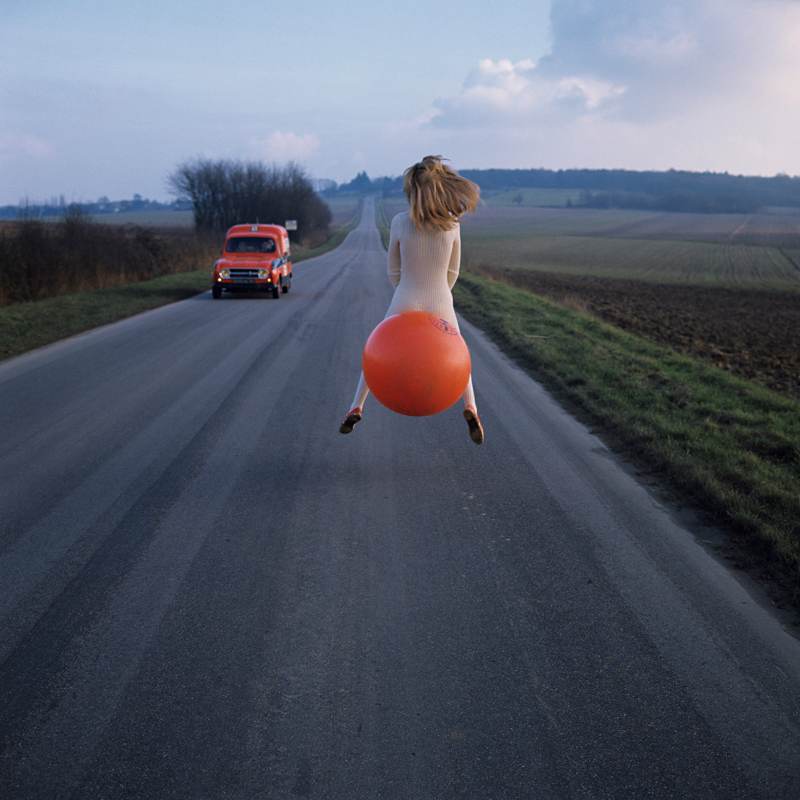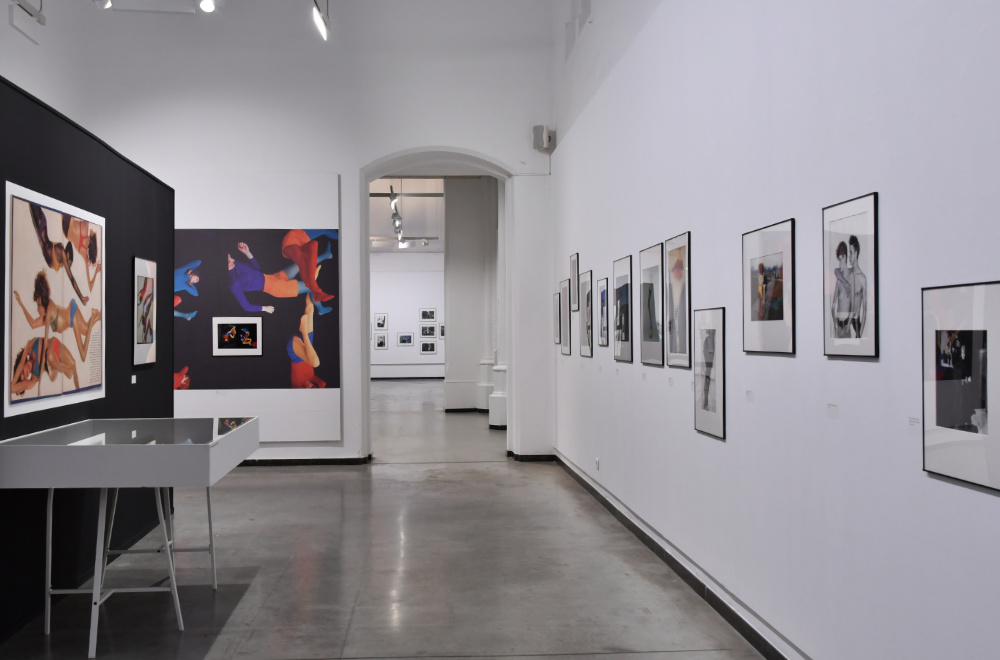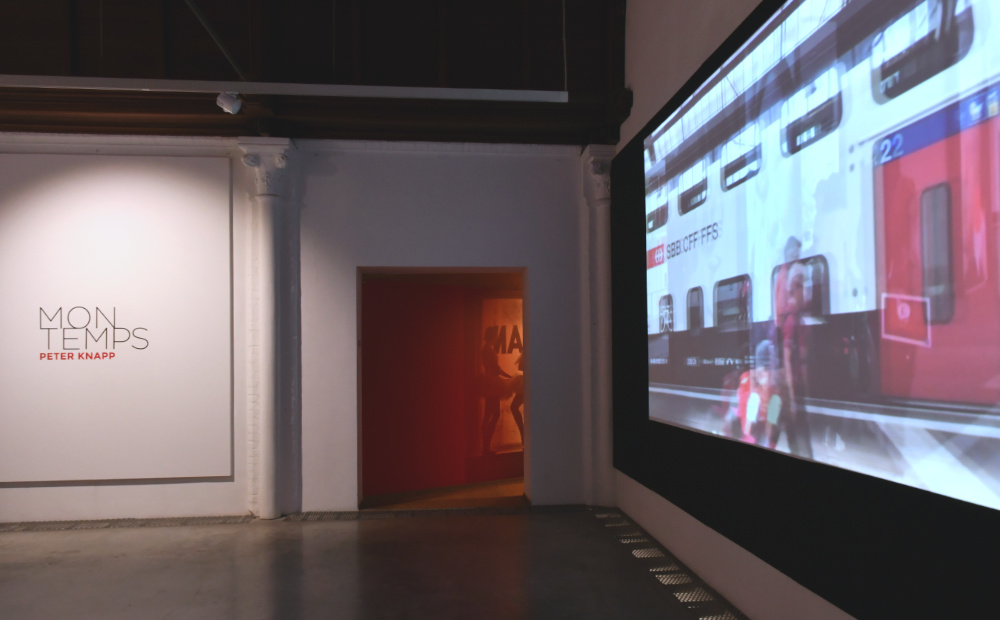03/02/24 - 26/05/24
dans la salle
Peter KNAPP. Mon temps
‘What motivates me is transforming ideas into images. I try to visualize my thoughts, to express my fantasies and stories in images. I don’t take photos, I make them.’ Peter Knapp
When Hélène Lazareff, the founder of Elle, asked Peter Knapp to develop the magazine’s editorial line in 1959, she used Harper’s Bazaar as her counter-example, even though she had worked during the war for Alexei Brodovitch, who was its artistic director. Gone were the days of icy chic, of models frozen in the studio lights or on the marble stairs of an haute couture house. With Elle, it was all about ready-to-wear clothes that liberated forms, that liberated women. It was a time of change since women had been granted the right tovote and Lazareff sensed that this change had to be accompanied. The aptly named magazine opened its pages to Simone de Beauvoir, Marguerite Duras and Françoise Sagan. Women’s emancipation was also a matter of clothing and Elle had a duty to be one of its standard-bearers.
Peter Knapp directed the magazine into a visual dynamic that challenged conventional layout grids, drawing on his training as a graphic designer and typographer as well as on his painting skills. He made abundant use of diagonals – his signature, with his double-spread – close-ups, low-angle shots and geometric references inspired by the creations of Courrèges and Ungaro. His models floated on tethers or glided weightlessly across illuminated tables. This quest for movement led him to film them in 16 mm and then isolate a few images, combining practices in a way that had never been seen before.
Knapp then translated his graphic concepts to Dim Dam Dom, the legendary ORTF programme created by Daisy de Galard, another contributor to Elle, whose filmed equivalent it was. Along with Jean-Christophe Averty, Knapp was one of those who revolutionized the way television programmes looked in the 1960s. For a long time, fashion photography was considered a minor genre, a way for photographers to make a living. And yet, great photographers have devoted themselves to it, from Man Ray and Jeanloup Sieff to Maurice Tabard, Richard Avedon and Erwin Blumenfeld, to name but a few. Through the magazines that were their vehicles, fashion photography helped to shape the way people looked at things and to familiarize them with the language of photography. Today, photography is exhibited and collected, and it has entered museum collections and is regularly the subject of major exhibitions, bearing witness to an era as much as to its artistic dimension. Indissociable from their layout, Peter Knapp’s pictures are not only a reflection of fashion photography, they have also shaped it, opening the way to new graphic expressions. In this sense, Peter Knapp is more than ever ‘of his time’, and still is today.
Biography
- 1931 – 5 June: Birth of Peter Knapp in Bäretswil in the Zürcher Oberland, Switzerland.
- 1937–47: Primary and secondary education in Zurich. 1947: Studies at the Zurich School of Applied Arts, inspired by Bauhaus concepts. Peter Knapp learns typography, painting and photography, printing tech- niques and page layout.
- 1951: Peter Knapp moves to Paris. Studies at the Beaux-Arts.
- 1954: Peter Knapp helps the decorator Slavik to fit out the Drugstore on the Champs-Élysées.
- 1955: Peter Knapp is appointed artistic director of Galeries Lafayette in Paris, reorganizing the typography and favouring photography for advertisements.
- 1958: Together with Slavik, he designs the tobacco, banking and insurance pavilions for the Brussels World’s Fair.
- 1959: At the invitation of editor-in-chief Hélène Lazareff, Peter Knapp becomes artistic director of Elle magazine. At the same time, he continues his painting career.
- 1960: Meets Robert Rauschenberg and Barnett New-man in New York, who encourage him to work on larger paintings.
- 1966: Peter Knapp leaves Elle and becomes a free-lance photographer for Vogue, Stern and The Sunday Times. He is also appointed artistic director for the Courrèges and Ungaro collections. With Daisy de Galard, he creates the legendary ORTF programme Dim Dam Dom using his graphic concepts.
- 1974–77: Returns to Elle as artistic director.
- 1983–94: Peter Knapp teaches at the École Supérieure des Arts Graphiques in Paris. Peter Knapp now divides his time between New York, Paris and Switzerland, where he continues to paint and photograph.
Peter Knapp. Mon temps. An exhibition of Fotostiftung Schweiz, Winterthur, in collaboration with the Musée de la Photographie, Charleroi.
With the support of Pro Helvetia





